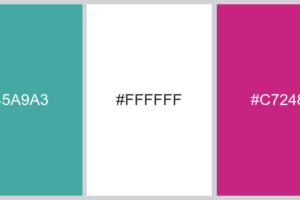Increasing visitors to your website is only the first step to reaching your end goal. Constructing and optimizing Call-to-Action designs is equally important.
So you’re finally getting the traffic on your website you’ve long desired, but the metrics you’re seeing in your dashboard aren’t translating to anything substantial in terms of results. This is where Call-to-Action (CTA) designs play an important role in helping you reach your goals, whether it’s an increase in ad revenue or getting customers to buy your new products.
Here are 11 actionable tips for optimizing your website’s CTA design, so that you can turn those traffic metrics into desired results.
1. Strategic Pop-Ups
Make pop-ups actually relevant to your intended goal. Too often, content creators and marketing teams employ pop-ups in their website that might not be top priority. For instance, if your goal is to increase subscriptions in your brand new online literary journal, you want your pop-ups to inform the audience clear and straight-to-the-point information about your subscription rates and discount offers. You can even integrate the subscription form into the pop-up feature to provide the customers with a smoother, easier process. Your audience will appreciate such efforts and you will actually reach your target goals.

J. Crew’s web team know what they’re doing.
2. The Side Dish is Just as Important as the Main Course
Young, inexperienced web designers tend to go straight to the main content when they receive a commission. While the content itself is your moneymaker, you should never forget that side bar is an important part of your design’s architectural integrity. Your side bar can either work as your main navigation menu or supplement it. In any case, it essentially acts as a table of contents to your website, so make sure that it’s both aesthetically pleasing and that its functionality has a clear logic. If you’re side bar looks like a boxy HTML element with cluttered navigation sub-menus, then a major re-design strategy is in your future.
3. Easy Navigation
Just because you have a sleek and accurately mapped-out side bar, it doesn’t mean you should ignore the traditional header menu (if you choose to have one). 90% of the time, customers who land on your website will head to the navigation bar to either find what they want or help them browse the website easier. As with any type of navigation menu, you want to create something that is both pleasing to the eyes and that will seamlessly direct them to the contents of your website. Another great feature about navigation bars is that you can customize them easily, allowing you to add CTA elements that feature prominently in the header, such as “Join Now!” or a direct link to a web page containing new popular products.

Banana Republic’s home page features 2 header navigation bars: one for BR itself and a static one that lets customers easily visit other stores owned by Gap Inc.
4. Upgrade Your Subscription Forms
If you operate a subscription-based website—i.e., news aggregators, literary journals, exclusive retailer—then having a sleek and functional subscription form is extremely important.Your website’s subscription form is the door that separates your customers from your products or services, so it’s important to make sure there is a direct connection between the two. For instance, it is essential to clearly state the terms of the subscription, discounts you are offering, and the benefits of subscribing.

Metro New York’s subscription form may not be sexy, but it perfectly gets the job done.
5. Shopping Experience
If you have a great team of UX (User Experience) designers, it is your responsibility to guide them into creating buttons and other CTA elements in your website that are not only aesthetically pleasing, but lead your audience to direct actions, such as shopping carts. Remember, your objective is to create a smooth and impressive experience for your loyal patrons and potential customers.
6. Bold Colors
Independent studies by psychology and neuroscience researchers shows that certain colors influence our mood and decision making. Use this to your advantage by injecting bright, bold colors into your website’s motif. But be warned: don’t overuse eye-catching colors or else you’ll turn off customers with tacky and uniform visuals.
Think about simple contrast, for example:

Red and White fleet uses black and red colors to contrast their call to actions for new visitors. This differentiates informational searches – viewing a schedule – from transactional searches – booking tickets. The black designates a non-transactional or emotional function while red is commonly used in association with emotions. Booking a ticket or buying anything for that matter is often catalyzed with reds, oranges, and yellows.
7. Streamlined Layout
Great color schemes, well-placed navigation bars and precise content information will not have much of an effect in enticing your customers to take progressive action if all of these CTA elements are just sloppily thrown together. As with print packages, it is important that you make the layout of your website streamlined logically and spaced economically.
8. Multimedia Presentations
Don’t just make your site content one-dimensional—that’s boring! Employ a multimedia approach that won’t only impress your audience, but provide them with important information as well. Your multimedia CTA products should somehow direct potential customers or investors to your intended goal, whether it’s purchasing a new clothing line or buying advertisement space in your website. For instance, if you want businesses to buy advertisement space in your blog, present them with a user-interactive feature detailing why their investment will be worth it.
9. State the Urgency
When writing content for CTA elements on your website, you should never use a passive voice. Instead, illustrate the urgency of what you’re trying to promote.

This is not to say that you should use overly-hyperbolic language, or make false claims simply meant to create a reaction. You should have an experienced copywriter on your team to craft the perfect content that will get the message to your audience without peppering the text with multiple exclamation marks.

Non-profit organizations like Human Rights Watch know how to use urgent language to get support from readers by backing up their rhetoric with facts and statistics.
10. Optimized Ad Strategies
You should never spend your marketing budget on advertising campaign—like AdWords or Facebook—until you have a clear strategy that everyone in your team is committed to. Make sure that your Call-to-Action is stated clearly in ad packages. Tip: If you’re going to marry a visual element with the text in your digital advertisement, make sure the photo or artwork is relevant.
11. Narrow Your CTA’s Goal
When you construct a CTA product—e.g., email newsletter, pop-ups, social media campaigns, etc.—make sure that you keep it simple and focused. When you direct your audience to a landing page from, say, an email newsletter, don’t suddenly bombard them with extra features. For instance, if your goal is to get customers to browse through your clothing line’s Autumn collection by offering coupon codes, don’t include un-related topics such as encouraging them to follow your updates on Twitter; you should create a separate project for that.


